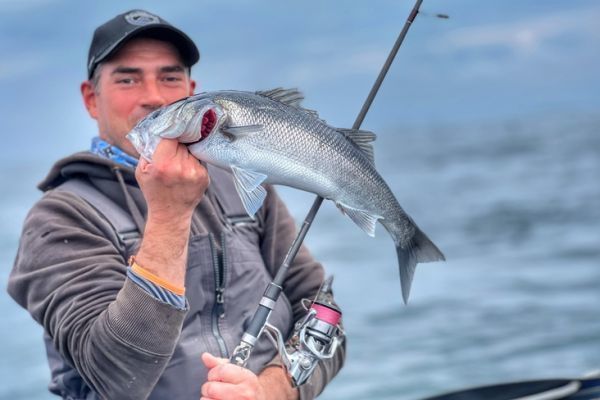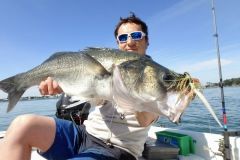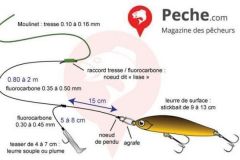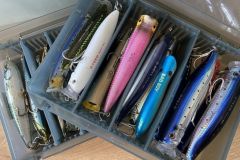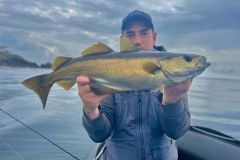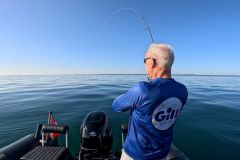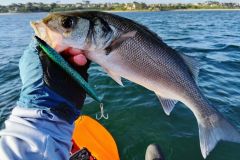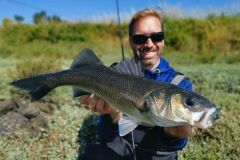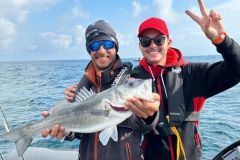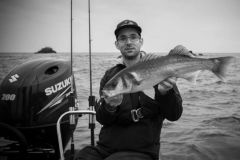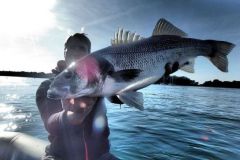Summer is here. As the water warms up, the fish become increasingly active. I took advantage of a weather window to set sail for the Channel Islands.
There, we can find beautiful fish in very little water, including walleye. This makes it easy to return them to the water, given the reasonable fishing depth.
Bars in the stream
The low coefficient was not in our favour when it came to finding sea bass in the current veins.
This fish prefers oxygenated, choppy waters, where prey is carried by the current. That's why they're more active when the current is strong.

Fortunately, the configuration of certain spots allowed us to find places more exposed to the current. In addition, a few birds came to help us locate them
Lure of the day: Crazy Sand Eel by Fiiish
Sand eels are still present in the area. They are of good size and the Crazy sand Eel 180 mm from Fiiish is the lure that stood out from the rest.
As far as possible, I try to offer lures that match the diet of the fish in the area. Sometimes it doesn't take much for the fish to decide to ignore your lure. A model that's too small or too big for the size of the prey being hunted and the bass will shun your lure.
Animated on the fly between two waters, it is formidable on active fish such as bass on the hunt.
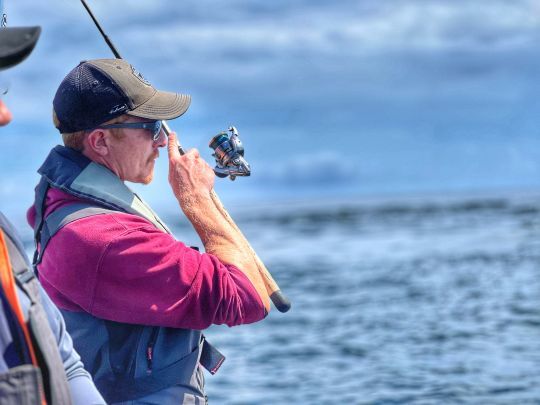
I'm partial to the natural color, which is a safe bet.
At greater depth, its linear retrieve is just as effective. With its new 20-gram head, it can be used on a wide range of spots.
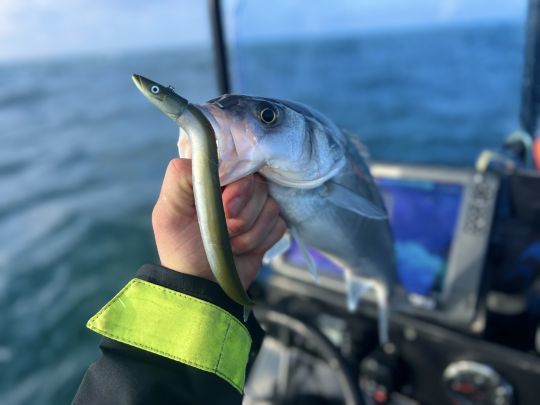
Active places with the arrival of slack tide
As the current diminished, sea bass activity dropped off considerably, giving way to yellow leeches.
Without changing the lure, but fishing closer to the bottom and more slowly, the yellows proved very responsive to the Crazy Sand Eel.
This fish has a defense that gives a good feeling.
Fishing in shallow water with light rods like Rodhouse's NFC SJ 706 IM or NFC SJ 804 Delta allows you to take pleasure in fish between 50 and 70 cm.
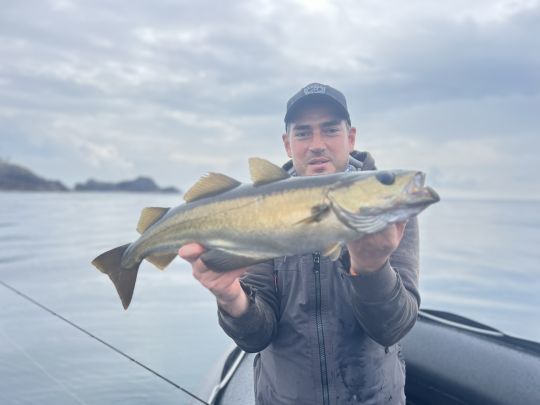
What's more, fishing at depths of up to 20 metres makes it easy to return fish to the water.
The quota is a maximum of 2 bass and 2 pollack per day and per angler.
In this area, the variety of species is considerable. We were lucky enough to catch other fish such as the numerous and sometimes very large olds, sea bream and mackerel.
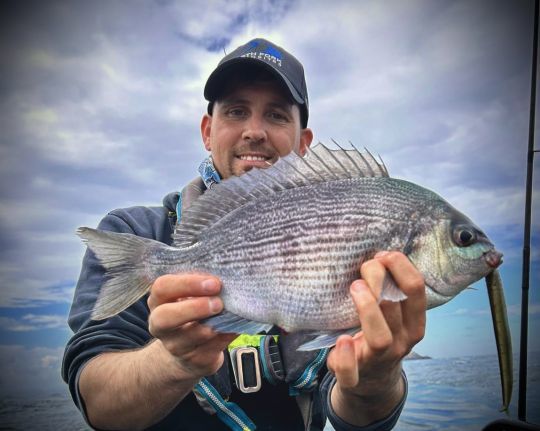
In the end, around fifty fish of all species came on board, before setting off to grow even more.

